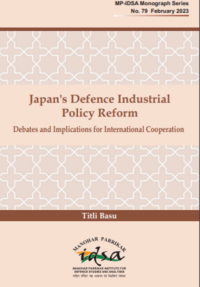China’s Discursive Nationalism: Contending in Softer Realms by Bhavna Singh
Chinese foreign and domestic policies cannot be understood without understanding the evolving nature of Chinese nationalism. Bhavna Singh's book on Chinese nationalism deals with this issue in a detailed manner. The Communist Party of China (CCP) has relied heavily on the notion of patriotism, which overlaps that of nationalism, for domestic and international legitimacy. All eyes are on the leadership transition in China and its implications for the world. It will be interesting to see how the new leadership deals with the growing nationalistic sentiment in the country.
- Arvind Gupta
- January 2013













